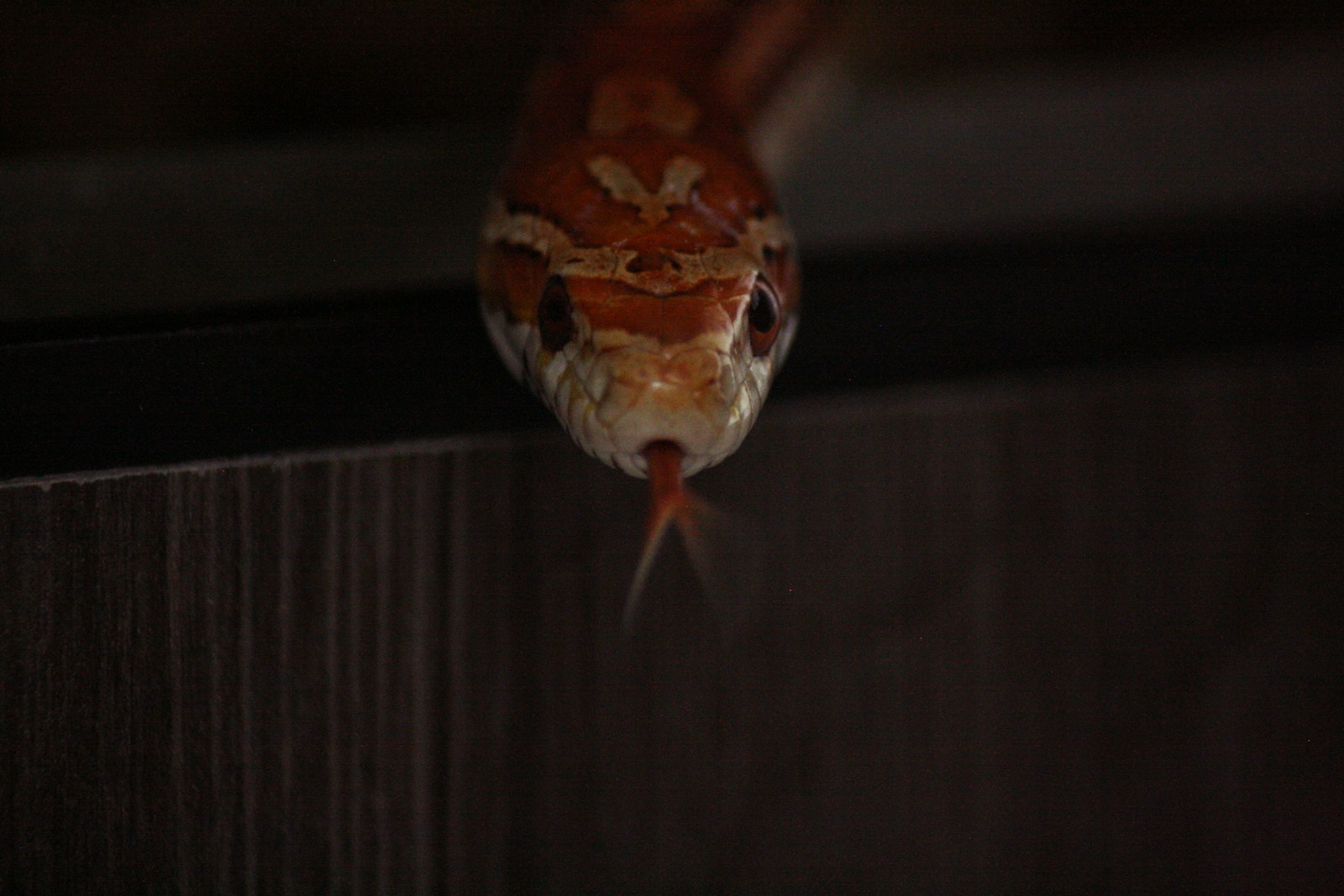Introducing a new snake to regular handling requires patience, consistency, and an understanding of reptile behavior. Unlike mammals that often seek social interaction, snakes don’t naturally crave human contact and may initially perceive handling as threatening. However, with proper techniques and respect for your snake’s boundaries, you can gradually build trust and confidence, making handling sessions stress-free for both you and your scaly companion. This comprehensive guide will walk you through the process of acclimating your snake to human touch, reading important behavioral cues, and creating positive associations that will strengthen your bond over time.
Understanding Snake Psychology
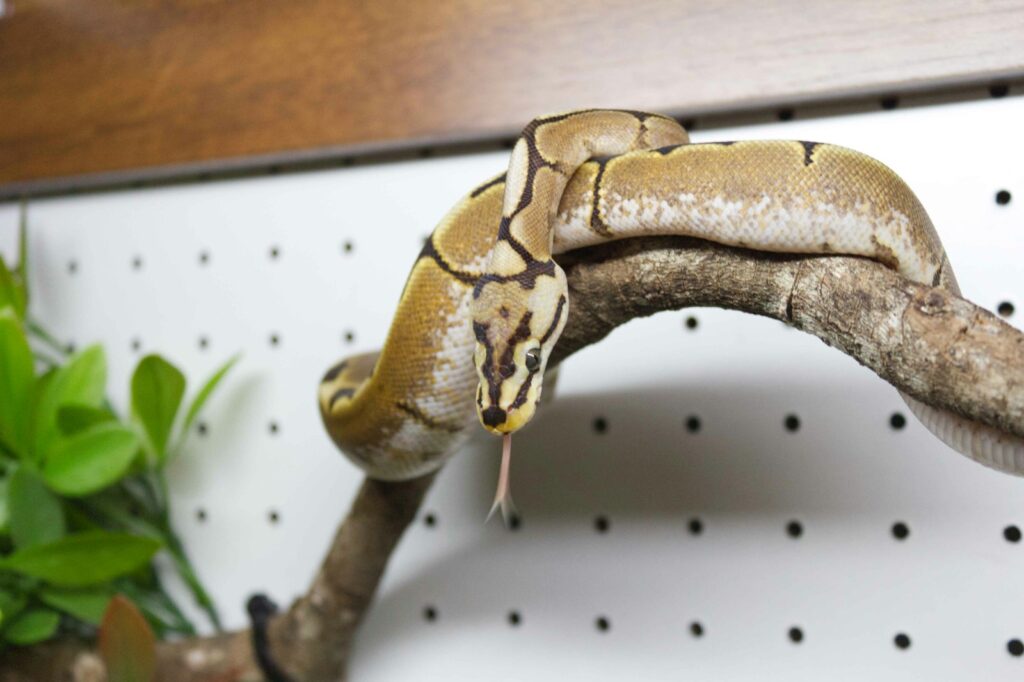
Snakes are instinctual creatures that primarily operate based on survival mechanisms rather than emotional connections. In the wild, being picked up typically means they’ve been captured by a predator, so their natural response is to feel threatened when handled. This fundamental understanding is crucial before starting any handling training. Different snake species also have distinct temperaments—ball pythons are generally docile, while certain colubrids may be more flighty and nervous. Your snake’s individual personality will also influence how quickly it adapts to handling, with some naturally being more curious and tolerant than others. Recognizing that snakes don’t process “affection” in the way mammals do helps set realistic expectations for your handling relationship.
Setting Up the Perfect Environment
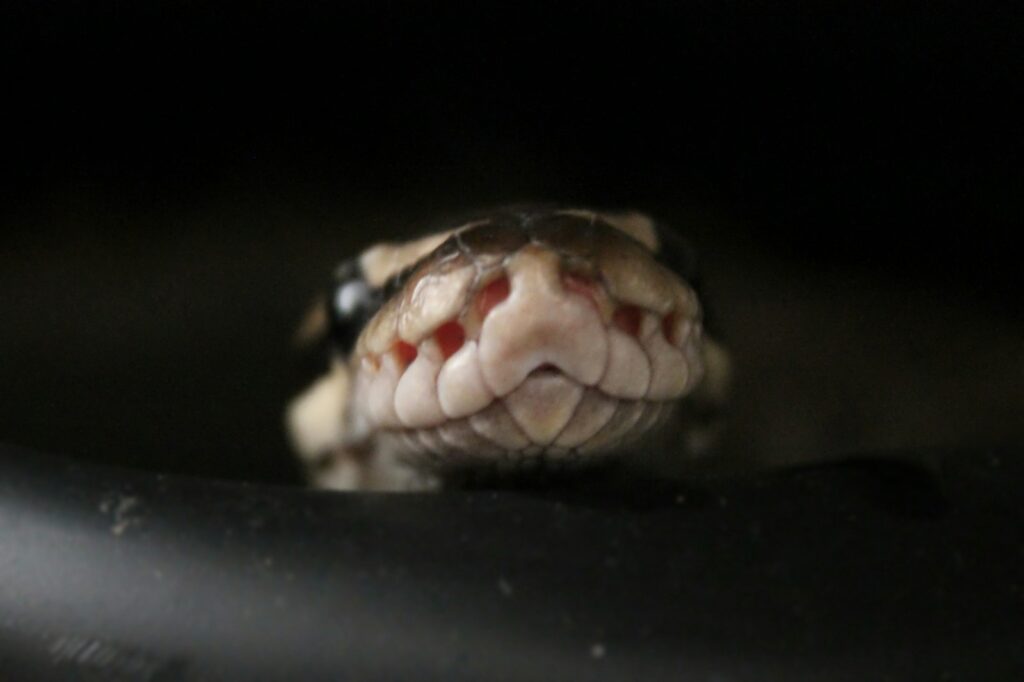
Before attempting to handle your snake, ensure its enclosure provides security, appropriate temperature gradients, and proper humidity. A stressed snake that doesn’t feel secure in its primary habitat will be even more resistant to handling. Make sure the terrarium includes multiple hiding spots, climbing opportunities if appropriate for the species, and correct substrate that allows for natural behaviors. The enclosure should be placed in a quiet area of your home, away from high traffic and loud noises that could cause additional stress. A snake that feels secure in its environment is more likely to remain calm during handling sessions, as it has a safe space to return to afterward.
The Acclimation Period
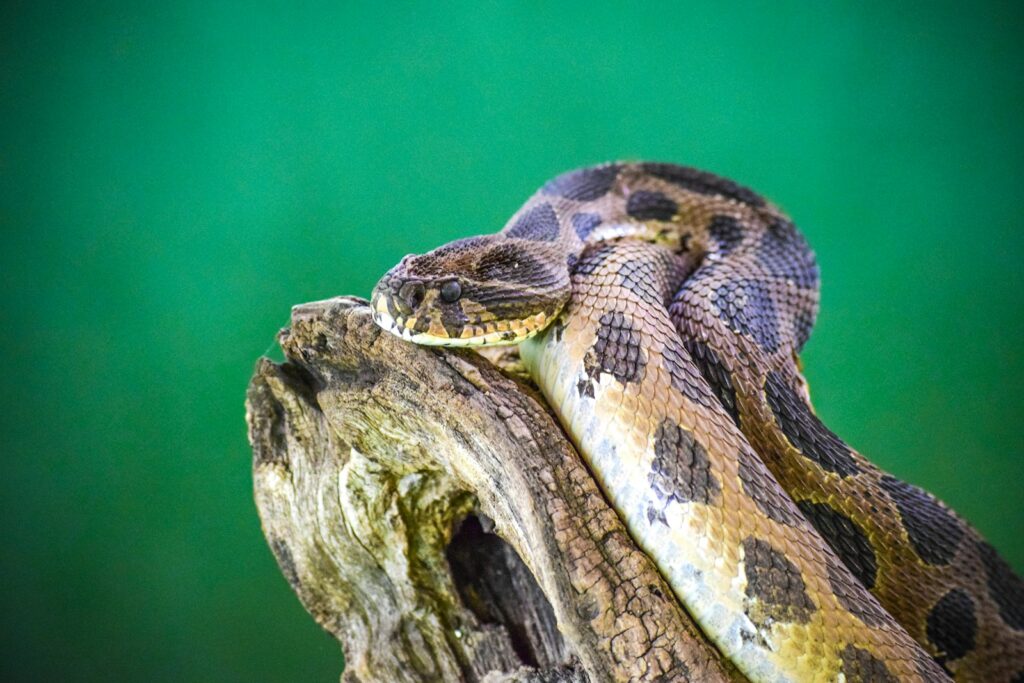
New snakes need time to adjust to their environment before any handling should be attempted. This adjustment period typically ranges from 7-14 days after bringing your snake home, during which time you should minimize disturbances except for necessary care. During this time, your snake is learning that its enclosure is safe and establishing regular behaviors. Premature handling can significantly set back this adjustment process and create lasting negative associations. Use this waiting period to observe your snake’s normal behaviors, eating patterns, and activity cycles from a distance. This patience pays dividends in establishing a foundation of security that will make later handling attempts more successful.
Starting with Scent Familiarization
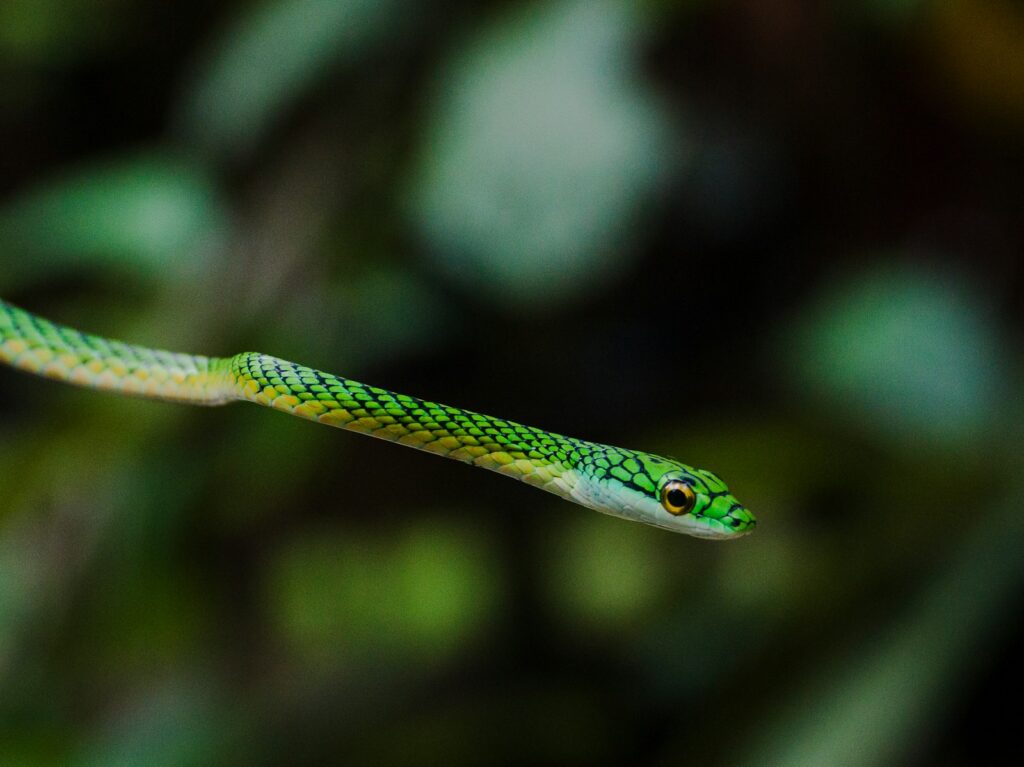
Snakes rely heavily on their sense of smell to interpret their world, making scent an important part of the trust-building process. Begin by placing a worn (but clean) t-shirt or cloth item near the enclosure so your snake can become familiar with your scent without the stress of direct contact. You can also place your hand on the outside of the terrarium for short periods while the snake is active, allowing it to observe you without feeling threatened. Some keepers find success by placing their hands in the enclosure without attempting to touch the snake, simply allowing their pet to investigate at its own pace. This gradual introduction helps the snake learn that your scent doesn’t signal danger, creating a foundation for physical contact.
Recognizing Readiness Signals
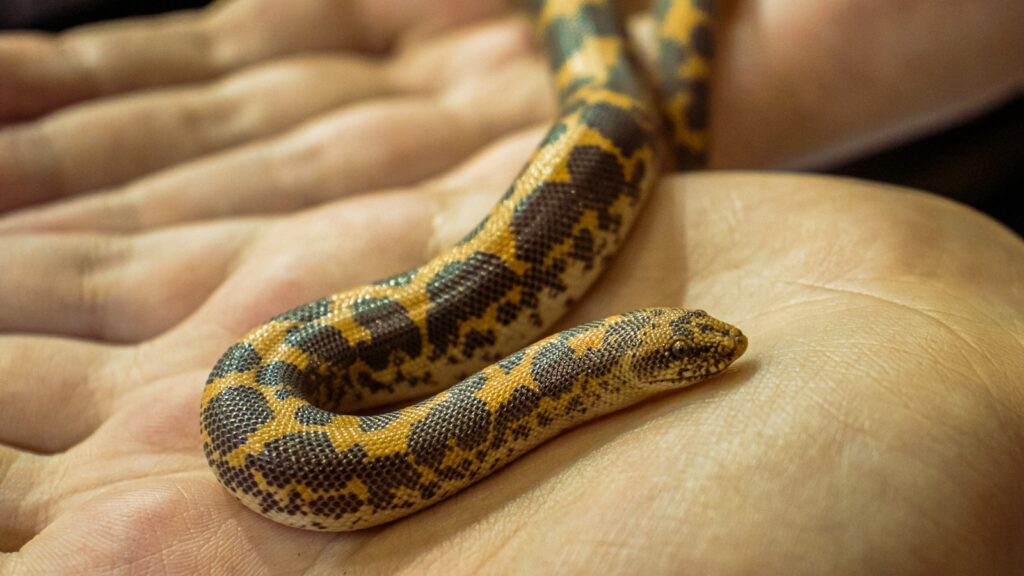
Learning to read your snake’s body language is essential for timing your handling attempts appropriately. A relaxed snake will move with smooth, unhurried movements and maintain a normal breathing pattern. Defensive postures include tight coiling, rapid tongue flicking, hissing, striking positions, or attempting to flee rapidly. Never attempt handling when your snake is showing stress signals, as this will only reinforce negative associations. A good time to attempt handling is when your snake is alert but calm, perhaps exploring its enclosure with relaxed movements. Timing is critical—avoid handling during shedding periods, after feeding (wait at least 48 hours), or when the snake is retreating to its hide spot for security.
The First Touch Approach
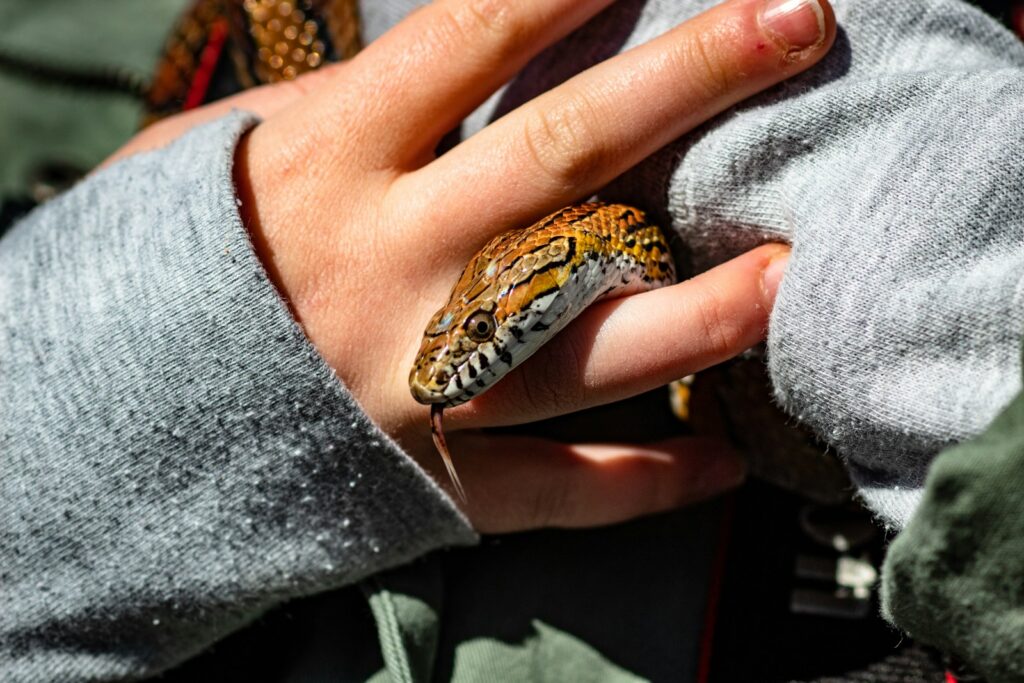
When beginning actual handling, use a hook or paper tube for initially moving the snake if you’re working with a more defensive species, as this creates distance between your hand and the snake’s sensitive head area. For docile species, start by gently touching the mid-body region rather than approaching from above the head, which can trigger a predator response. Move slowly and deliberately, avoiding quick movements that could startle your pet. If the snake remains calm during this initial contact, you can progress to sliding your hand under its body, supporting its weight evenly without restricting movement. These first interactions should last no more than 1-2 minutes, allowing the snake to associate brief handling with a prompt return to safety.
Building Handling Duration Gradually

Consistency is the cornerstone of successful handling training, with regular, brief sessions proving more effective than infrequent, lengthy ones. Begin with very short sessions of just 1-2 minutes, focusing on calm, supported handling rather than duration. As your snake shows comfort with these interactions, gradually increase time by 1-2 minutes per session, working up to 10-15 minutes over several weeks or months. Pay close attention to signs of stress during extended sessions, being prepared to return your snake to its enclosure if it becomes restless or defensive. This incremental approach respects your snake’s comfort zone while building its tolerance for longer handling periods, ultimately creating a more relaxed pet.
Creating Positive Associations
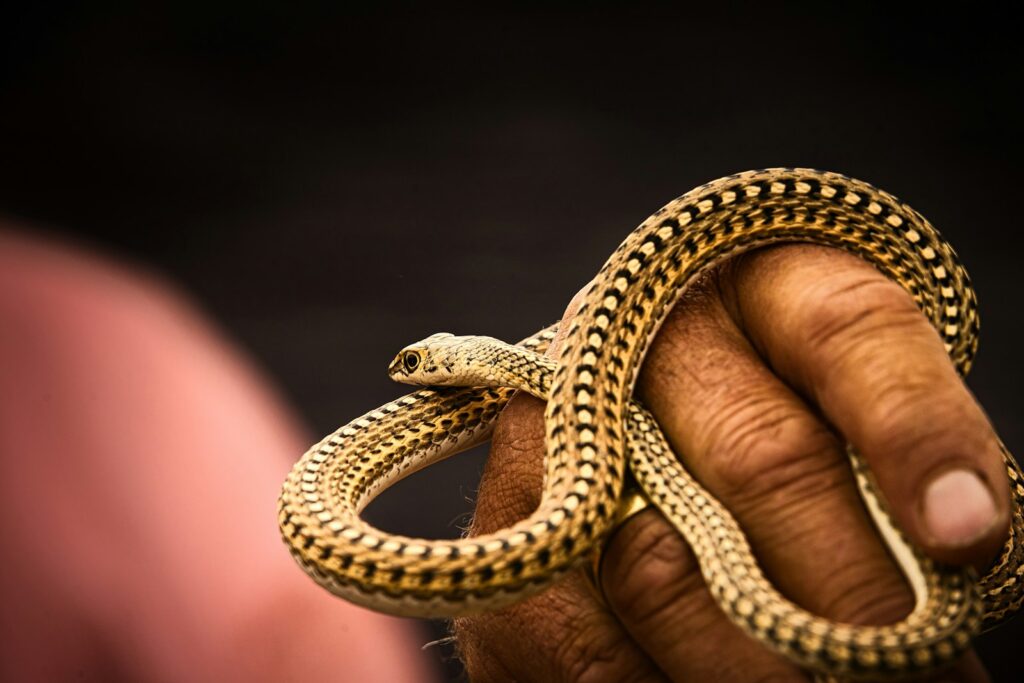
While snakes don’t respond to traditional rewards like mammals, you can still create neutral or positive associations with handling. Consider timing brief handling sessions before regular enclosure maintenance, as returning to a freshened habitat can become associated with the handling process. Some keepers find success handling their snake in a specific room or on a particular surface that becomes a familiar “handling zone” for the reptile. Avoid handling immediately before or after feeding, as this can create negative associations or increase risk of regurgitation. The goal is for your snake to view handling as a neutral, non-threatening part of its routine rather than a stressful experience to be avoided.
Managing Defensive Behaviors
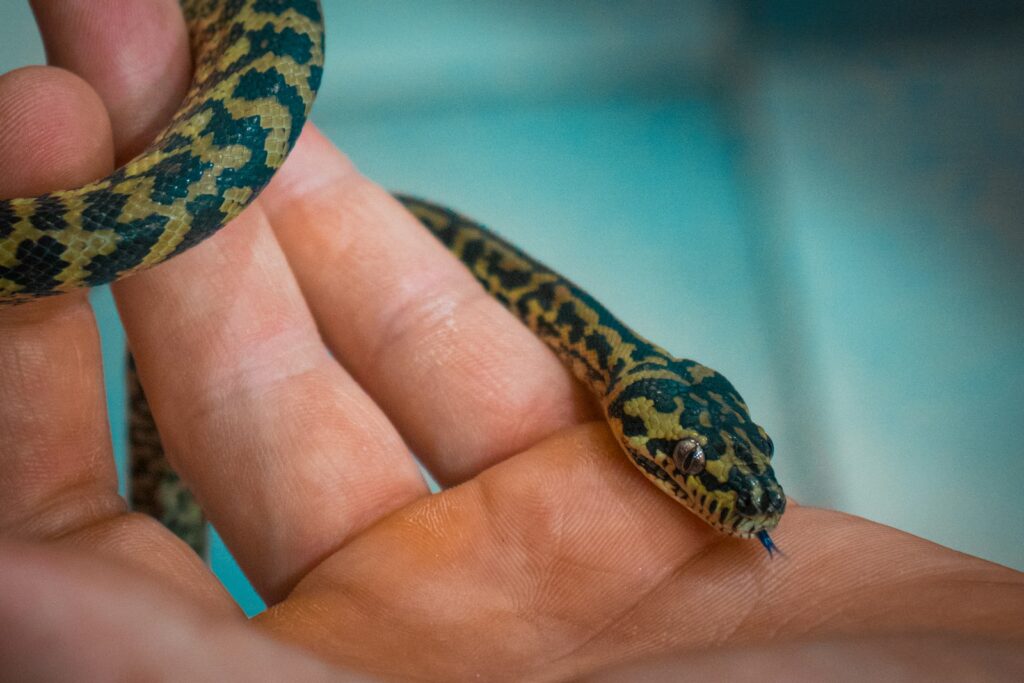
Even with careful acclimation, some snakes may display defensive behaviors during handling attempts. If your snake hisses, puffs up, or assumes a strike position, calmly return it to its enclosure and try again another day rather than forcing the interaction. For snakes that try to rapidly flee, practice handling in a small, secure area where you can safely retrieve them if they attempt to escape. Ball pythons may roll into a defensive ball when stressed—if this occurs, simply support the snake gently until it relaxes rather than trying to uncoil it. These defensive responses are communications, not personality flaws, and respecting them builds trust while preventing the snake from learning that extreme measures are necessary to end handling sessions.
Special Considerations for Different Species

Different snake species require tailored handling approaches based on their natural behaviors and temperaments. Arboreal species like green tree pythons and emerald tree boas should be provided with branch-like support during handling, mimicking their natural positioning. Fast-moving colubrids like corn snakes and king snakes benefit from handling in contained spaces until they become more comfortable with the process. Large constrictors require special handling techniques that ensure both snake and handler safety, often involving multiple people as the snake grows. Species-specific research is invaluable before beginning a handling program, as techniques that work well for one species may be ineffective or even counterproductive for others.
Handling Safety Protocols
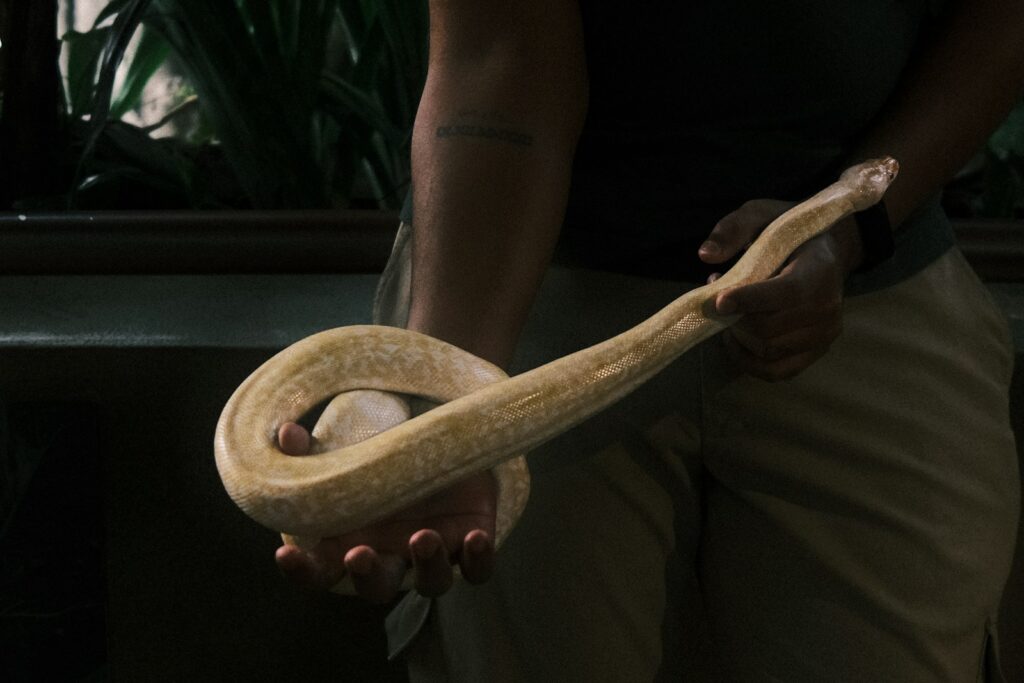
Safety should always be the priority during handling sessions for both you and your snake. Always wash your hands before handling to remove food scents that might trigger a feeding response, and again afterward for hygiene purposes. Never handle your snake while distracted, seated on high furniture, or in areas where the snake could access hiding spots that would be difficult to retrieve them from. For larger species, never handle alone once the snake reaches a size that could potentially cause injury if it constricts. Keep handling sessions away from other pets that might frighten your snake or be seen as potential prey. These safety measures prevent accidents that could damage the trust you’re working to build with your reptilian companion.
Troubleshooting Common Challenges
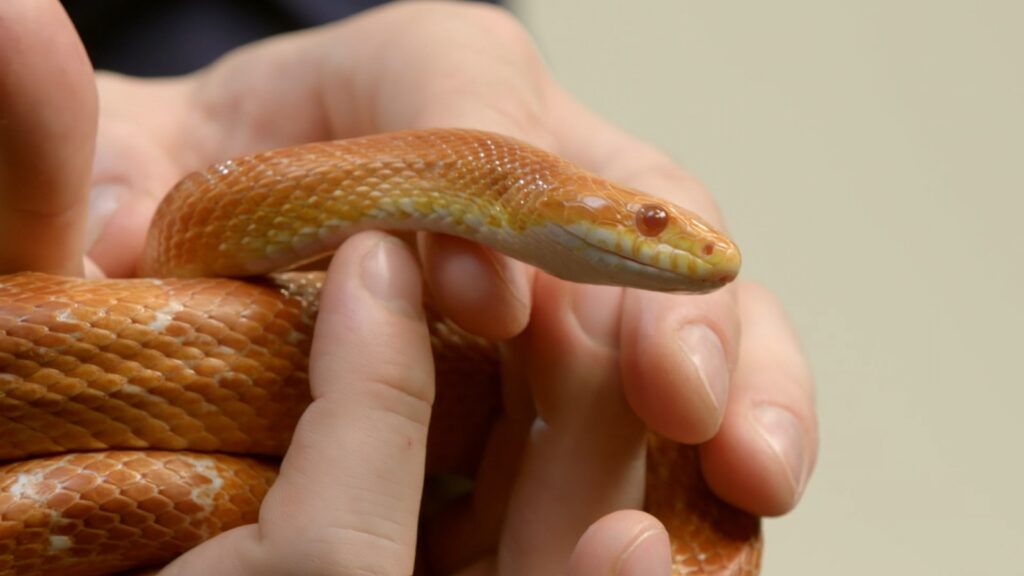
Some snakes may present specific challenges during the handling acclimation process. For consistently defensive snakes, try the indirect approach of placing them in a small, secure transport container first, then removing them for handling once they’re away from their territorial enclosure. Snakes that repeatedly attempt to escape during handling may benefit from sessions in a snake-proofed bathroom where they can explore under supervision before direct handling. If your snake shows feeding responses during handling (mouth gaping, intense following of your hand movements), consider wearing thin gloves until this behavior subsides. For snakes that defecate during handling due to stress, shorter sessions with very gradual duration increases can help overcome this defensive response.
Maintaining Handling Comfort Long-Term
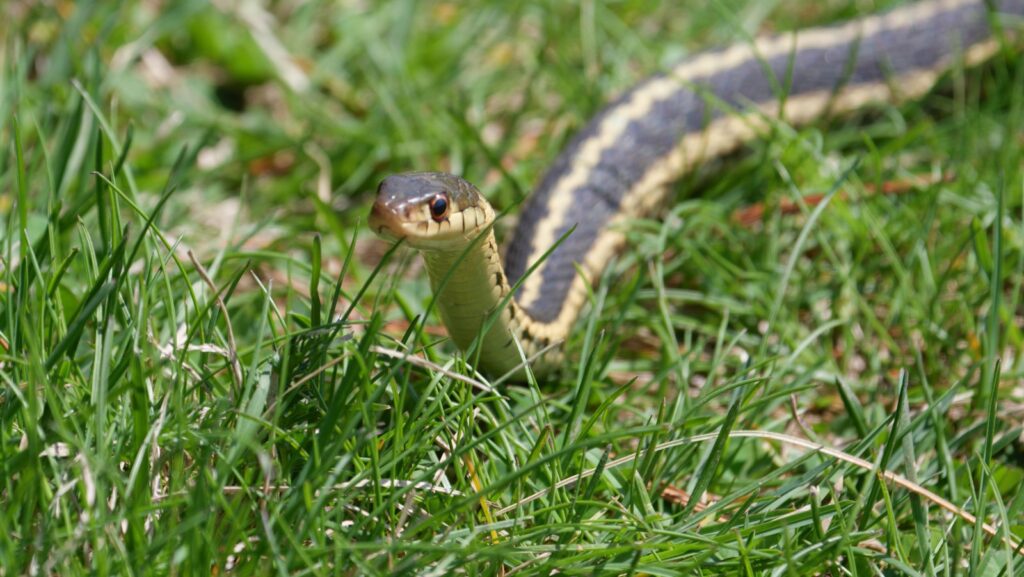
Once your snake has become comfortable with regular handling, maintaining this comfort requires continued consistency and respect for its needs. Establish a regular handling schedule of 1-3 times weekly, avoiding excessive handling that might stress your pet. Even well-acclimated snakes should not be handled during pre-shed periods when their vision is compromised, making them more likely to feel vulnerable. Be aware that seasonal changes, particularly breeding season, may temporarily alter your snake’s tolerance for handling. Some previously docile snakes become more defensive during these hormonal shifts. Adult snakes may require less frequent handling to maintain their comfort level compared to juveniles, which often benefit from more regular gentle interaction.
Successfully teaching your snake to accept handling is a rewarding process that enhances both your enjoyment of your pet and its quality of life in captivity. While snakes may never seek out handling in the way that dogs or cats might crave attention, most captive snakes can learn to tolerate regular, gentle interaction without stress. This comfort allows for easier health checks, enclosure maintenance, and the unique bond that comes from understanding and respecting a creature so different from ourselves. Remember that the goal isn’t to transform your snake into something it’s not, but rather to create a relationship based on trust and respect for its nature. With patience, consistency, and attentiveness to your individual snake’s cues, handling can become a calm, routine part of your shared experience.

